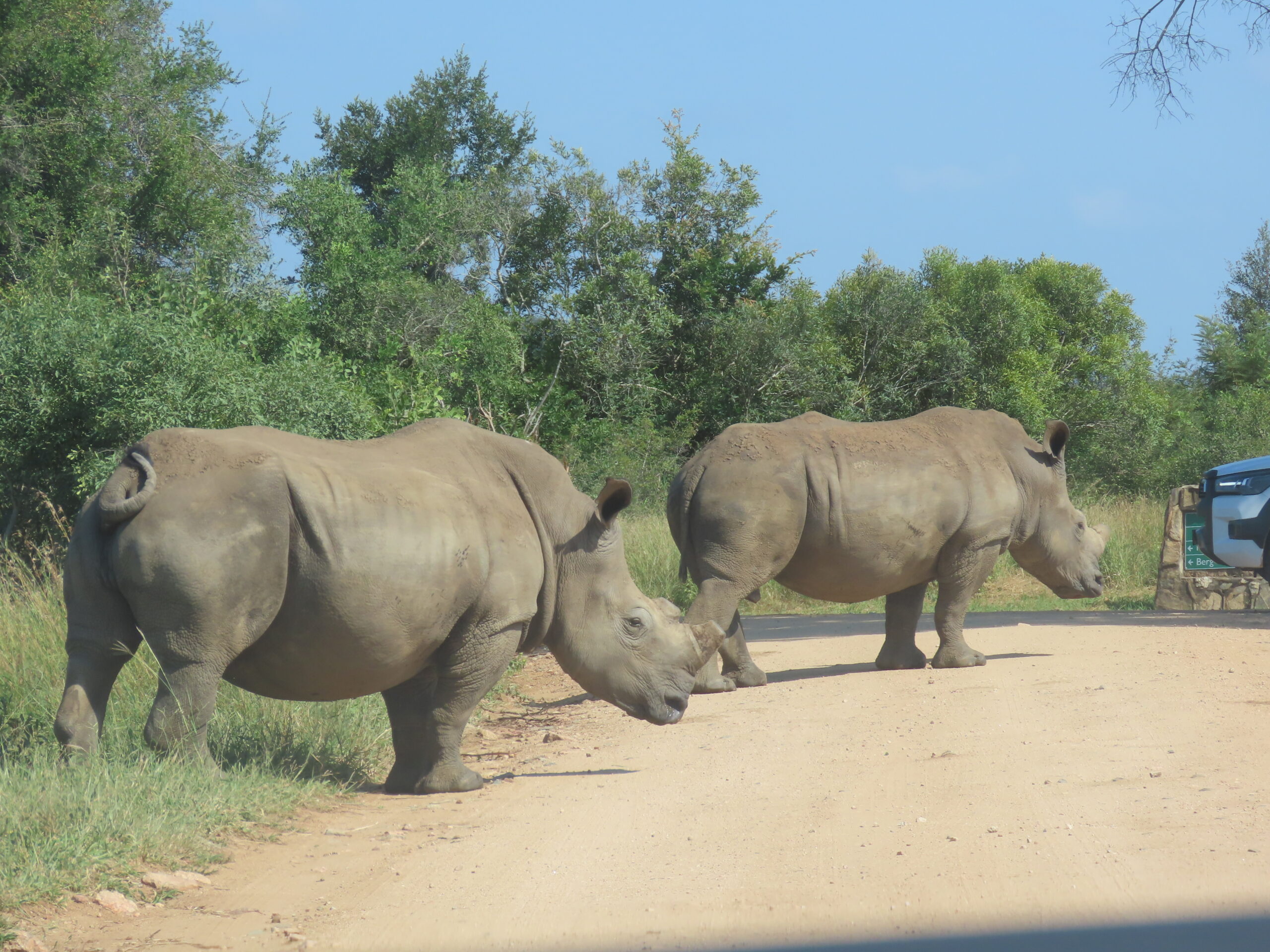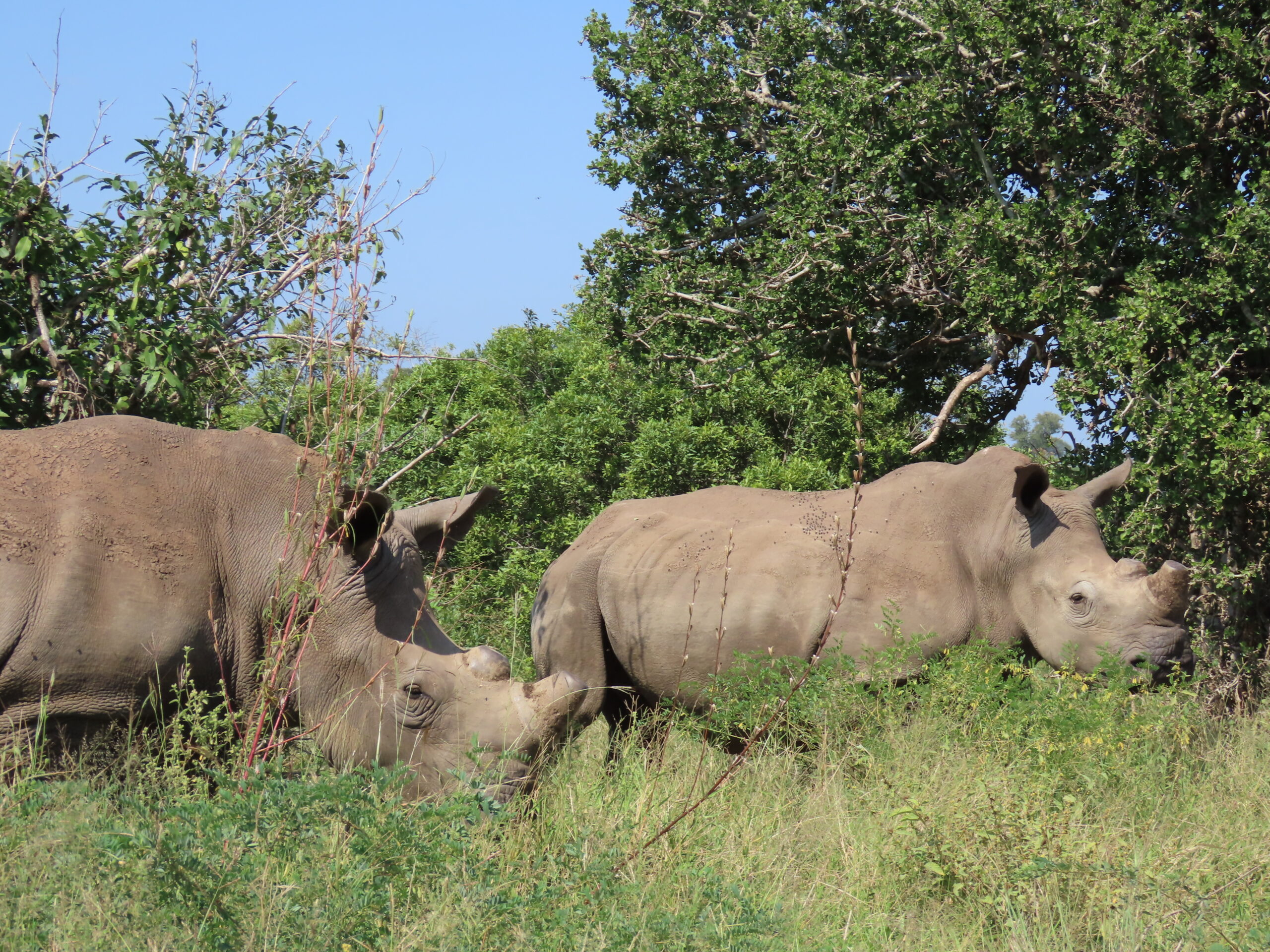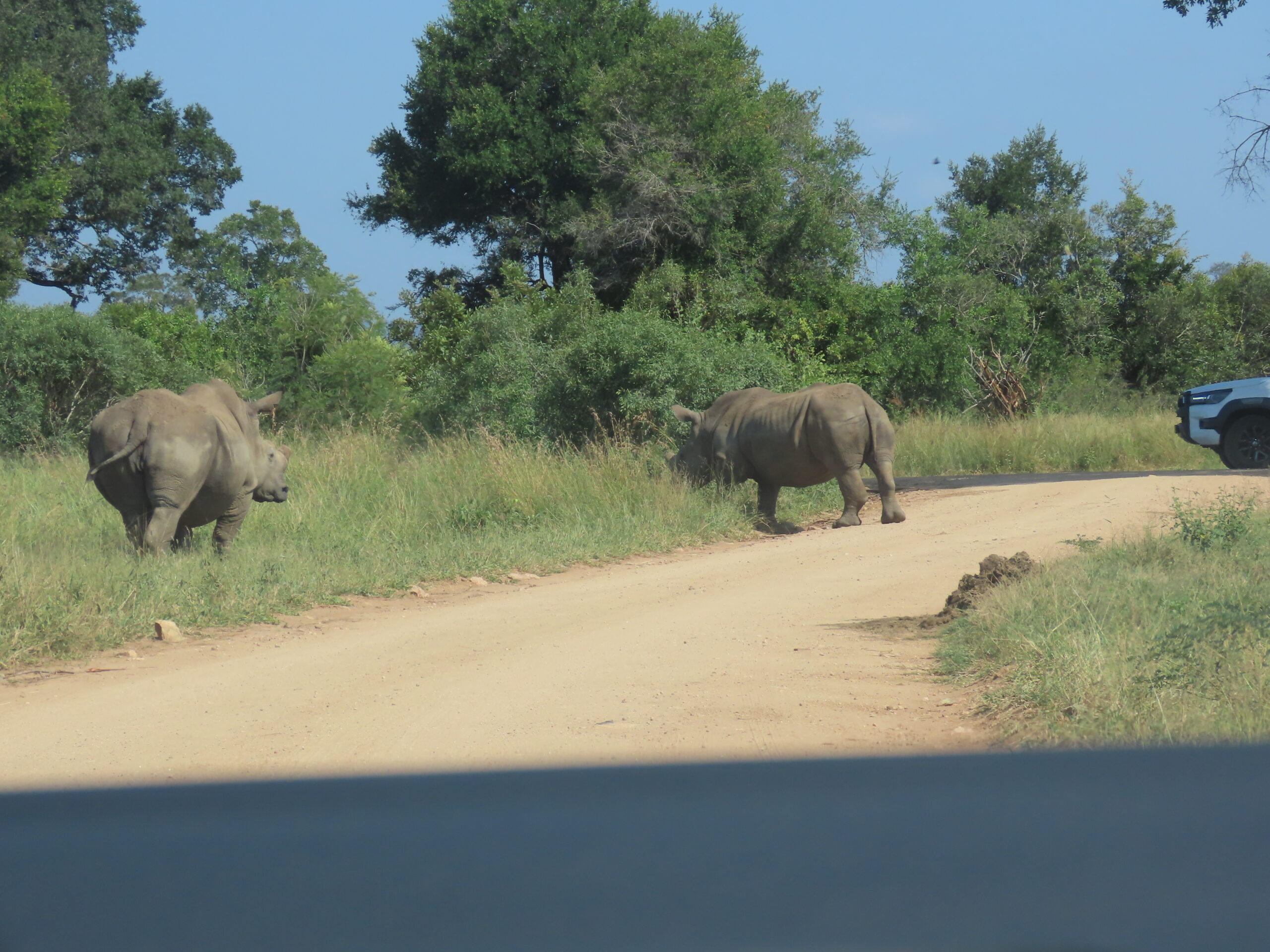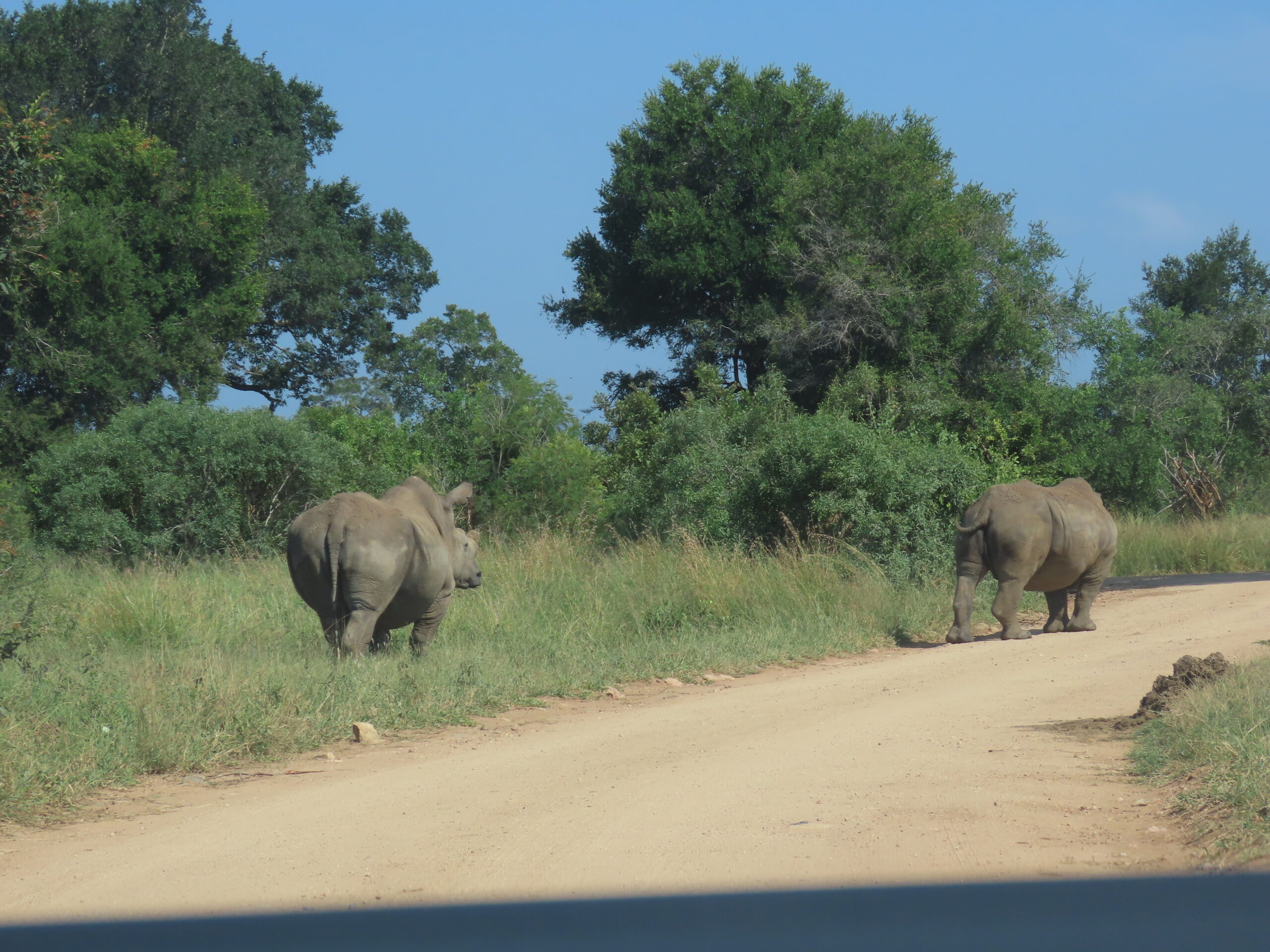
It couldn’t have been a better trip to Kruger National Park, when yesterday, after an early morning departure, we headed to the Crocodile Gate to begin our trek in search of the elusive rhino. Here are some stats on the rhino population in 2025:
In Kruger National Park, the rhino population in 2025 is estimated to be approximately 2,060, comprising both white and black rhinos, according to a report by Africa Geographic. This represents a significant decline from a high of 9,383 in 2013.

-
Total Estimate:
Around 2,060 rhinos remain in Kruger National Park.
-
White Rhinos:
Estimates for white rhinos range from 2,475 to 2,752, with a midpoint estimate of 2,613.5, according to the International Rhino Foundation.
-
Black Rhinos:
Estimates for black rhinos range from 172 to 237, with a midpoint estimate of 204.5, according to the International Rhino Foundation.
-
Declining Trend:
The rhino population has decreased by approximately 78% in the last 10 years, according to Africa Geographic.
-
Poaching Concerns:Poaching remains a major threat to rhinos in Kruger National Park, with a significant escalation in poaching activity during December 2024 and January 2025, according to the Department of Forestry, Fisheries, and the Environment.
Why Are Rhinos Being Poached?
Rhinos, magnificent creatures that have roamed the Earth for millions of years, are facing a grave threat: poaching. Despite international efforts to protect them, rhinos continue to be killed illegally, and their populations are dangerously low. Understanding the reasons behind this poaching crisis reveals a complex web of cultural beliefs, economic pressures, and organized crime.

At the heart of the issue is the demand for rhino horn. Rhino horns are highly valued in certain parts of the world, particularly in Asia. In traditional Chinese medicine, the horn is believed to have healing properties. It has been used for centuries to supposedly treat ailments ranging from fevers to cancer, despite scientific studies proving that rhino horn, primarily composed of keratin— the same substance found in human hair and nails — has no proven medicinal benefits. Still, old beliefs persist, and in places like Vietnam and China, rhino horn is often regarded as a symbol of status. Wealthy individuals might display it or gift it to others as a show of power and prestige.
The monetary value of rhino horn on the black market is staggering. It can fetch prices higher than gold or cocaine, creating a powerful incentive for poachers, especially in impoverished areas where legal employment opportunities are scarce. In some rural communities near rhino habitats, poaching offers a life-changing payout. This economic desperation makes it easier for organized crime networks to recruit locals to hunt rhinos, offering them equipment and bribes.

Organized crime plays a significant role in the poaching crisis. International criminal syndicates manage the trafficking of rhino horns from Africa and parts of Asia to markets around the world. These groups have the resources to smuggle horns across borders, launder profits, and evade law enforcement. They treat wildlife trafficking with the same seriousness as drugs or arms smuggling, making it a significant global crime issue, not just a conservation problem.
Another layer to the problem is the lack of vigorous enforcement and corruption. In some countries where rhinos are found, wildlife protection agencies are often underfunded, understaffed, or poorly trained. Poachers may bribe park officials, police, or customs agents to look the other way. Even when poachers are caught, legal systems often hand out light punishments that fail to deter future crimes. Without consistent, harsh penalties and real political will, poachers and traffickers feel emboldened to continue their activities.

Habitat loss adds more pressure to rhino populations. As human populations grow and agriculture expands, rhino habitats are shrinking. When rhinos are confined to smaller areas, they become easier targets for poachers. In addition, fragmented habitats make it harder for rhinos to find mates, reproduce, and thrive, compounding the effects of poaching.
Conservationists and governments are fighting back. Anti-poaching patrols, dehorning programs (where rhinos are humanely sedated and their horns are removed to make them less valuable targets), and community engagement projects are all part of the effort to save rhinos. Some countries, such as Namibia and Botswana, have achieved success with programs that involve local people directly in conservation, giving them a financial stake in protecting wildlife rather than poaching it.

Still, the battle is far from over. As long as there is demand for rhino horn, there will be those willing to risk everything to supply it. To truly end rhino poaching, a global effort is needed — one that addresses the cultural beliefs driving demand, the poverty that drives poachers, and the criminal networks that profit from the slaughter.
The plight of the rhino is a stark reminder that the survival of a species depends not only on the animals themselves but also on the choices humans make. Every horn that is bought, every bribe that is paid, and every rhino that falls to a poacher’s gun brings us closer to losing one of nature’s most iconic giants forever.
Enjoy today’s rhino photos. We cannot disclose where we spotted the rhinos to prevent poachers from learning about our location at the time, which would prompt these evildoers to investigate that area.
Be well.
Photo from ten years ago today, April 23, 2015:
 |
| The Wai’oli hui’ai Church in Hanalei, Kauai, was built by the congregation in 1841. For more photos, please click here. |
























































































